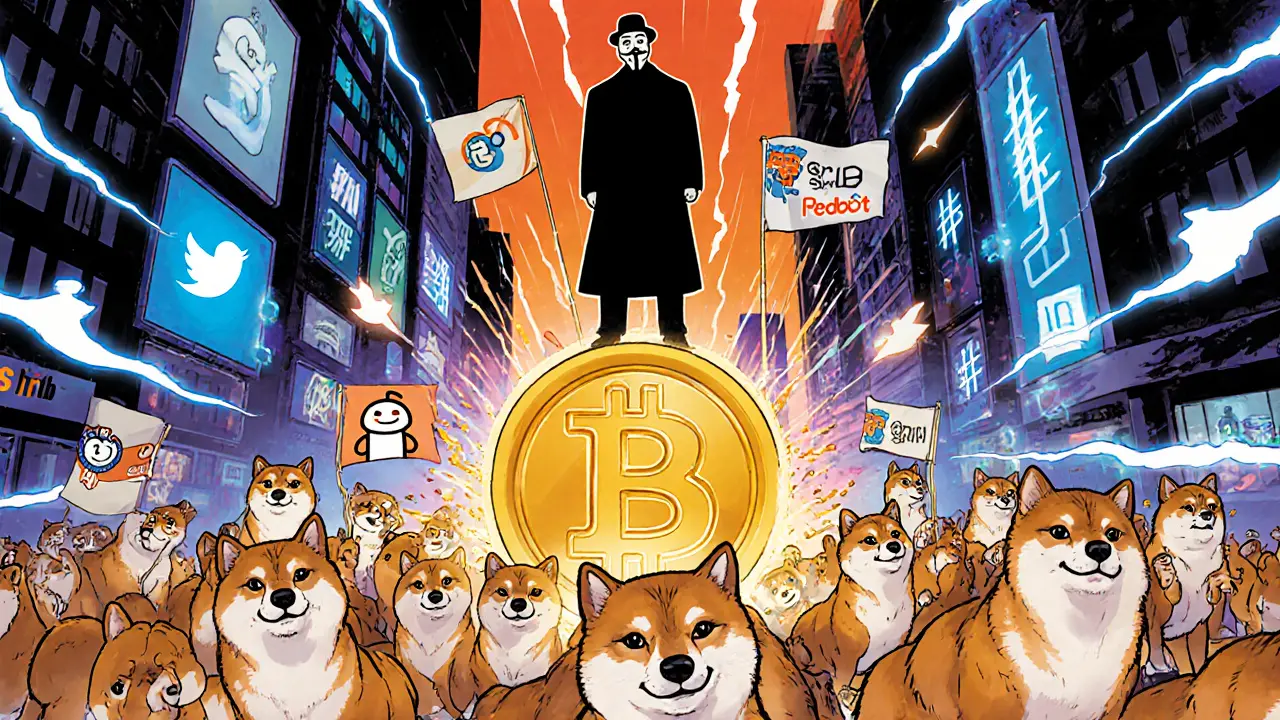Meme Coin: What It Is, Why It Pops, and Which Tokens Matter
When diving into meme coin, a low‑cap crypto that rides humor, community buzz, and viral trends. Also known as meme token, it often spikes on social media and can attract both big gains and big risk.
Examples like RatCoin, a satirical token that mocks the rat‑infested market narrative or Baby Bitcoin, a miniature version of Bitcoin that plays on the original’s brand show how meme coins can copy famous names to catch attention. Both illustrate the pattern that meme coin markets often copy established assets, then amplify price moves through memes.
How Meme Coins Work and What Drives Their Price
Meme coins encompass viral hype, community sentiment, and speculative momentum. The first semantic triple: meme coin social media influences price. When a tweet goes viral, the token can jump 10x in minutes. The second triple: investing in meme coin risk management requires discipline. Because price swings are extreme, traders need stop‑loss strategies and clear entry‑exit plans. The third triple: meme coin ecosystems often rely on community memes to sustain interest, turning jokes into liquidity.
Most meme coins are built on Ethereum or Binance Smart Chain, using ERC‑20 or BEP‑20 standards. This means you can store them in any standard wallet, but you also inherit the network’s gas fees. Many projects offer airdrops or contests to grow their follower base; look for tokenomics that allocate a large share to “community rewards.” If the reward pool is too big, it can dilute value quickly, which is a red flag.
Risk factors are real. Because meme coins have low market caps, a single large sell‑off can wipe out most holders. Regulatory scrutiny is rising; some jurisdictions may label them as securities if they promise profits. Also, many meme coins lack audited code, opening the door to rug pulls. Always check if the contract is verified on explorers and if the team is transparent about ownership.
If you’re curious about specific tokens, RatCoin (RAT) and Baby Bitcoin (BABYBTC) are worth a quick look. RatCoin’s launch story involved a parody of “rat‑infested markets,” and its tokenomics allocate 50% to a liquidity pool, 30% to community giveaways, and 20% to the developers. Baby Bitcoin, on the other hand, mirrors Bitcoin’s supply curve but on the Solana blockchain, offering ultra‑low fees and fast swaps. Both have experienced sharp price spikes after meme‑driven hype on Discord and Telegram.
Beyond individual tokens, the broader meme‑coin ecosystem includes tools like price trackers, meme‑token dashboards, and community analytics platforms. These help you spot emerging trends before they explode. For example, a sudden surge in mentions on Reddit often precedes a price rally. Pairing social‑media monitoring with on‑chain data (like wallet inflows) gives a clearer picture of real demand.
When you decide to buy, choose a reputable exchange that supports the token and offers two‑factor authentication. Cold‑storage wallets are safest for long‑term holding, but if you plan to trade frequently, a hardware wallet might be overkill. Instead, use a secure software wallet and keep your private keys offline when possible.
Finally, treat meme coins as high‑risk, high‑reward parts of a diversified portfolio. Allocate only a small percentage—often less than 5%—of your total crypto holdings. That way, a potential loss won’t cripple your overall strategy, and any upside can still boost your returns.
Now that you’ve got the basics, the list below dives deeper into specific meme‑coin guides, security tips, tax considerations, and real‑world case studies. Explore the articles to see how each concept plays out in practice and to get actionable steps for your next move in the meme‑coin space.




